Alternatives to SDBS for Obtaining NMR Spectra
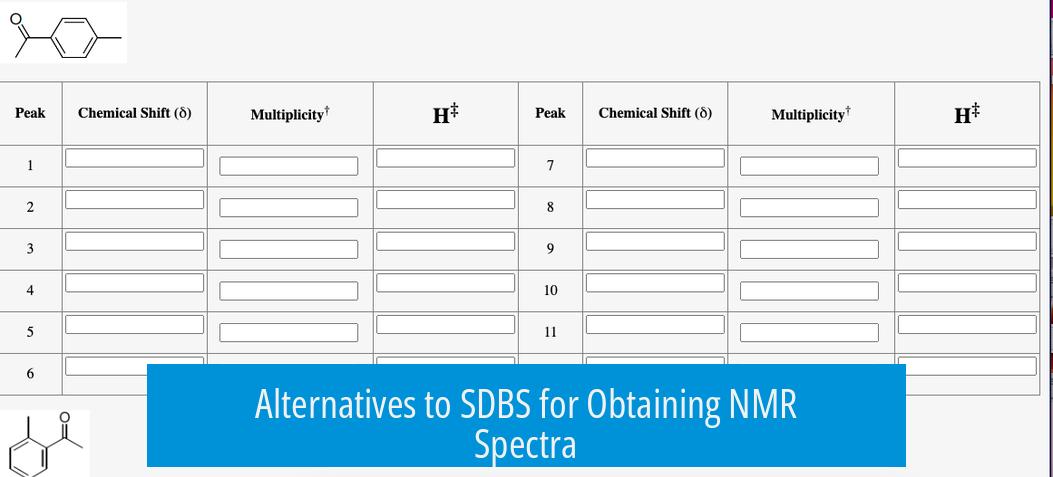
Several reliable sources and tools serve as effective alternatives to SDBS for accessing or generating NMR spectra. These options cater to different needs, from obtaining experimental data to predicting spectral patterns.
1. Aldrich Website PDFs
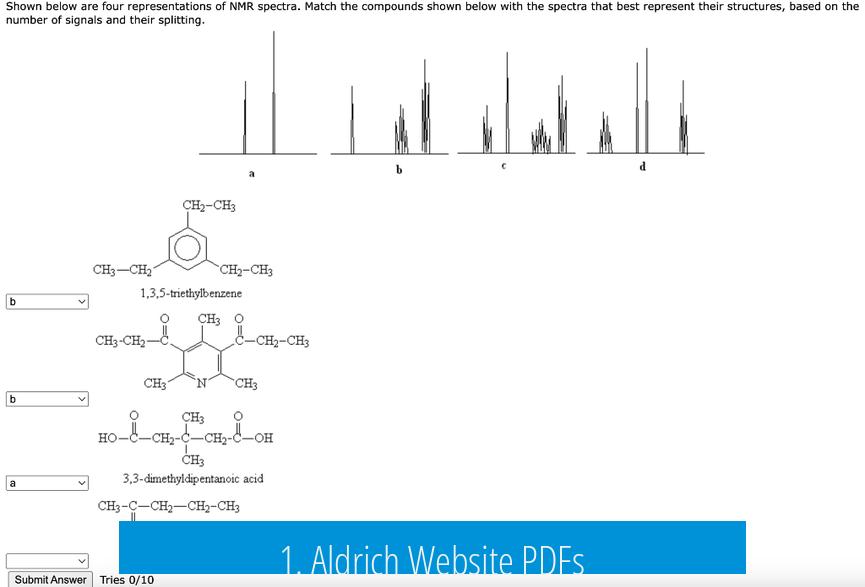
The Aldrich website offers downloadable PDF files containing NMR spectra for many commercially available compounds.
- Users can find these by looking under the ‘Documents’ section on each compound’s page.
- Searching for “FT-NMR” within the webpage (using Ctrl+F) can help locate available spectral data quickly.
- If multiple catalog numbers exist for one compound, spectral data might only appear on one listing.
This source provides experimental spectral data that is reliable and easy to access.
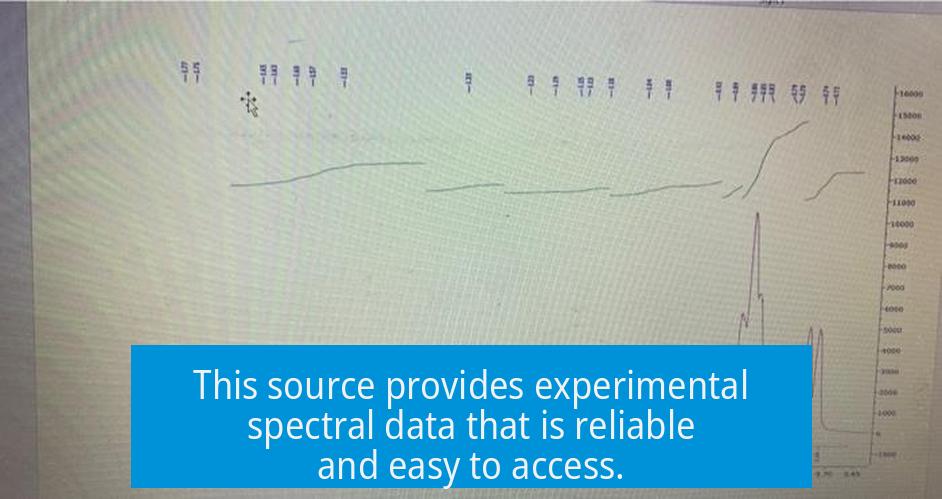
2. SciFinder via University Access
University-affiliated researchers often have free access to SciFinder, a comprehensive chemical information database.
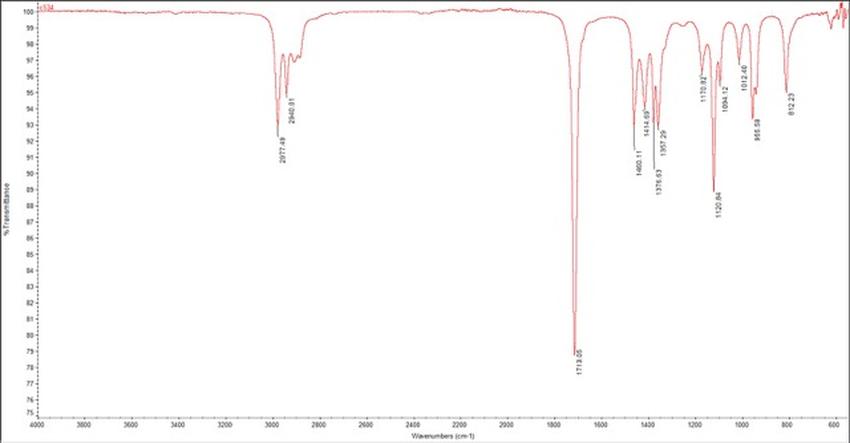
- SciFinder includes extensive NMR spectra and related data for a wide range of compounds.
- Its advanced search features make locating specific NMR spectra efficient.
- Its scope extends beyond NMR to other spectroscopic techniques and literature references.
This makes SciFinder a valuable alternative, especially for academic users.
3. Predicted Spectra Using ChemDraw
If experimental spectra are unavailable, ChemDraw software can generate predicted NMR spectra based on molecular structures.
- Predicted spectra help estimate chemical shifts and splitting patterns.
- This feature supports preliminary analysis and compound verification.
- While predicted data lacks experimental variability, it provides useful guidance.
Summary of Alternatives
| Source | Type of Spectra | Access | Notes |
|---|---|---|---|
| Aldrich Website PDFs | Experimental | Free, online | Only commercial compounds; manual search needed |
| SciFinder | Experimental and literature data | Institutional subscription | Broad coverage; academic focus |
| ChemDraw Predictions | Predicted spectra | Paid software license | Estimates, not experimental |
Key Takeaways
- The Aldrich website offers downloadable experimental NMR PDFs for many commercial compounds.
- University access to SciFinder provides an extensive and searchable database of NMR spectra.
- ChemDraw can predict NMR spectra, aiding in spectral interpretation when data are not available.
- These alternatives complement SDBS and enhance accessibility to spectral information.
Alternatives to SDBS for NMR Spectra: Unlocking New Tools and Resources
If you’re hunting for alternatives to SDBS (Spectral Database for Organic Compounds) for NMR spectra, the good news is—you have options. You don’t have to be stuck relying on just one database. Several reliable tools and resources can fill in your spectral gaps or speed up your research workflow. Let’s dig into three practical alternatives: Aldrich Website PDFs, SciFinder access via universities, and predicted spectra generation through ChemDraw. Each has its perks and quirks, and they might just save your day (or lab report!).
Ever felt stranded when SDBS didn’t have your compound’s NMR spectra? Yeah, been there. Instead of despairing, consider this—why not tap into the Aldrich website’s PDF spectral files?
1. Aldrich Website PDFs: Download Your NMR Treasure Trove
Sigma-Aldrich is famous for selling chemicals, but fewer people realize it’s also a neat resource for spectral data. If your target compound is commercially available, Aldrich likely has downloadable PDFs of its NMR spectra. Just search the compound, hit the ‘Documents’ tab, and voilà — find the FT-NMR spectra.
Pro tip: Sometimes the same compound has multiple catalog numbers, but only one will have the associated spectral data. Use your keyboard shortcut skills (Ctrl+F) to find ‘FT-NMR’ quickly inside the documents section. This little hack saves you precious weekend time.
Here’s what makes Aldrich PDFs great:
- They’re official and vendor-verified, so reliability is high.
- They show experimental conditions, so you get context, not just spectra.
- Easy to download and keep for your records or presentations.
Of course, if your compound isn’t sold by Aldrich, you’re out of luck here. But if it is, you score quick access to experimental spectra without the hassle of navigating complex databases.
2. SciFinder Access via University: Your Academic Spectral Goldmine
Got a university login? Lucky you. SciFinder is like the Swiss Army knife for chemists. Beyond literature searches, it hosts spectral data on many compounds. This can be more extensive than SDBS in some cases, with well-curated NMR spectra linked directly to academic papers.
Why is SciFinder so useful?
- Access to peer-reviewed, chemical-centric data sets — think of it as the scientific back office.
- Often has experimental conditions and sometimes even raw data files attached.
- Filters let you zero in on specific nucleus spectra (1H, 13C, etc.) or techniques.
For students and academics, this can be a game-changer. One catch? You need institutional access. Many universities have licenses, but not all. So, before you tear your hair out, check your university’s library portal or ask a librarian politely. They tend to be the gatekeepers of these things.
A long-term benefit is the seamless integration of spectral data with chemical literature. For example, if you find a compound you want to analyze, you can also see the reaction pathways and synthesis routes—all in one place. SDBS just can’t offer that depth.
3. Predicted Spectra Generation Using ChemDraw: When Reality Isn’t in the Database
Sometimes, no existing spectrum fits your needs. Enter ChemDraw’s predicted spectra feature—a nifty tool that estimates NMR signals based on molecular structure. While predicted spectra aren’t the real deal, they often do a decent job.
Why give predicted spectra a shot?
- Instant spectra generation without hunting through databases.
- Good for initial compound verification or when experimental data is unavailable.
- Aids in teaching and learning NMR signal interpretation.
Just keep in mind, predicted spectra come with limitations. They’re computational estimations, lacking nuances like solvent effects or experimental artifacts. Thus, use them as a guide—not gospel.
For example, a chemist working on a new compound with no precedent can sketch it in ChemDraw, run the prediction, and get a ballpark spectrum. This helps confirm if synthesized material matches expectations before diving deeper.
Which Alternative Fits Best for You?
Each option has its moment in the sun. Here’s a quick guide:
| Resource | Best Use | Limitations |
|---|---|---|
| Aldrich PDFs | Established compounds, quick downloads, reliable experimental spectra | Restricted to commercially available chemicals; sometimes incomplete listings |
| SciFinder | Comprehensive academic research, linked literature, experimental data | Requires university or subscription access; learning curve for new users |
| ChemDraw Predicted Spectra | Novel compounds, quick checks, educational purposes | Predictions only, no experimental nuances, less accurate for complex molecules |
Imagine you’re tasked with identifying a minor impurity in a sample. Aldrich PDFs might not cut it if the impurity isn’t commercially available. SciFinder might have data if it’s known in literature. But if nothing exists, ChemDraw predicted spectra give you a rough sketch to compare. It’s all about fitting the tool to the task.
Need More? Tips and Tricks for Spectral Hunting
Before you jump into search mode, keep these pointers handy:
- Use multiple sources: Cross-reference spectra across databases for better confidence.
- Scrutinize experimental conditions: Temperature, solvent, and NMR frequency can dramatically shift peaks.
- Be skeptical of predicted spectra: Use them as a hypothesis rather than definitive data.
- Leverage your institution’s resources: Librarians and professors might have secret access or tips.
- Stay updated: Spectral databases evolve; new compounds are added regularly.
In the end, your best approach blends free resources, institutional subscriptions, and smart software. Don’t rely on a single source. Spectroscopy is part science, part detective work.
Wrapping It Up
Alternatives to SDBS for NMR spectra abound. The Aldrich website offers reliable PDFs for commercially available compounds. SciFinder provides academic depth when you have university access. ChemDraw steps in with predictive spectra when experimental data is missing.
Think about your workflow: Are you hunting a blockbuster pharmaceutical intermediate or teaching undergraduates NMR basics? Your choice of resource reflects your goal and access.
By diversifying your spectral sources, you gain flexibility, confidence, and often save hours in the lab or library. The next time SDBS leaves a gap, remember—your alternatives are just a click or login away.
Ready to supercharge your NMR spectral searches? Start exploring these resources today and watch your spectral mysteries dissolve!


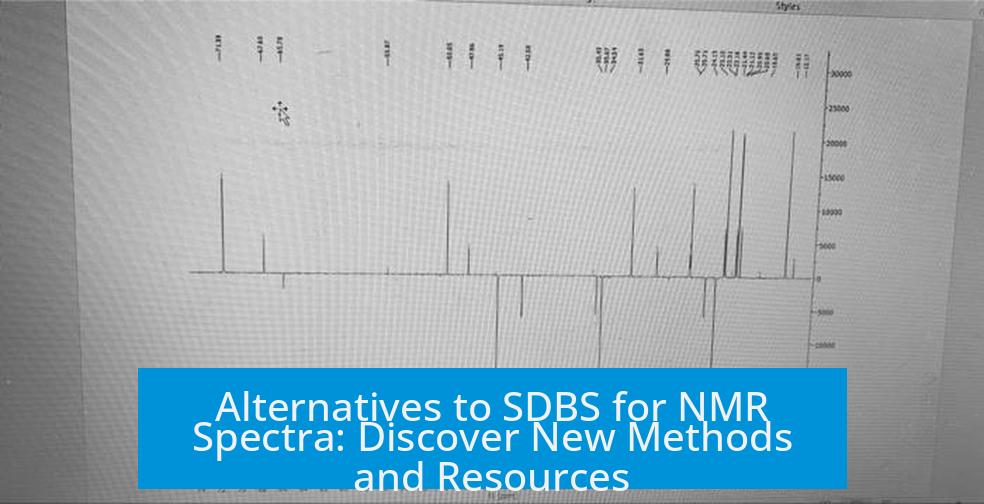


Leave a Comment